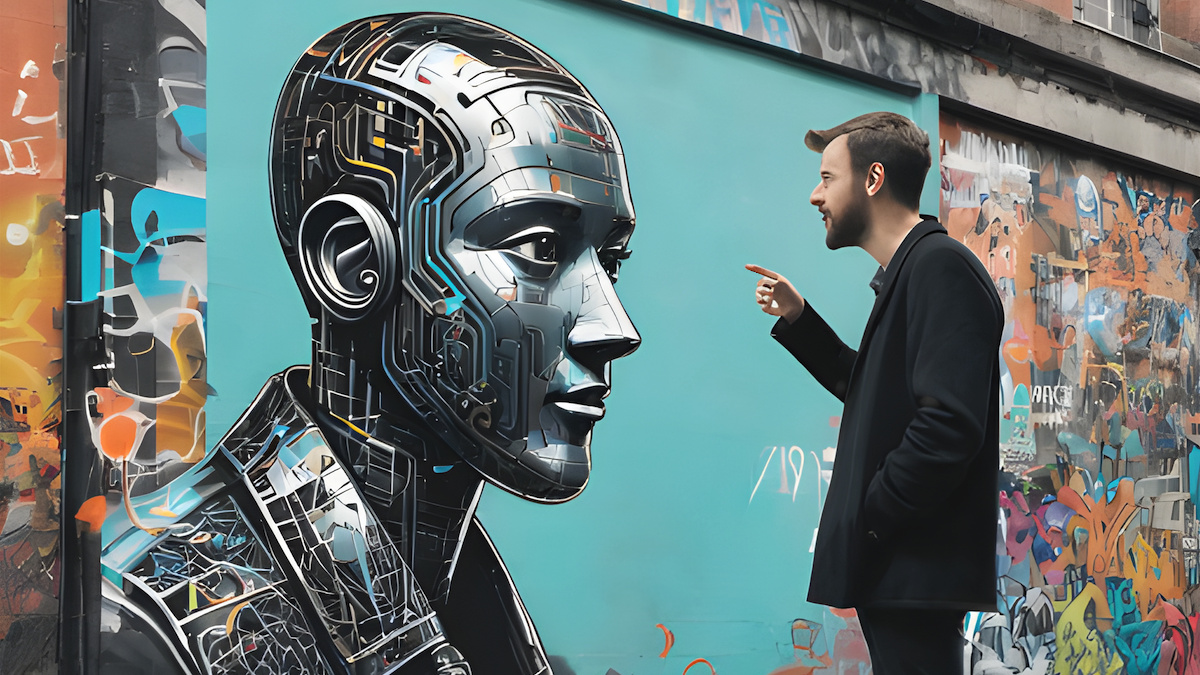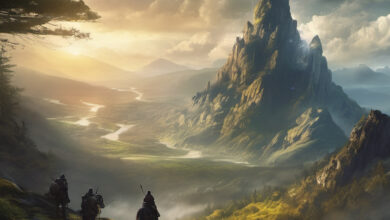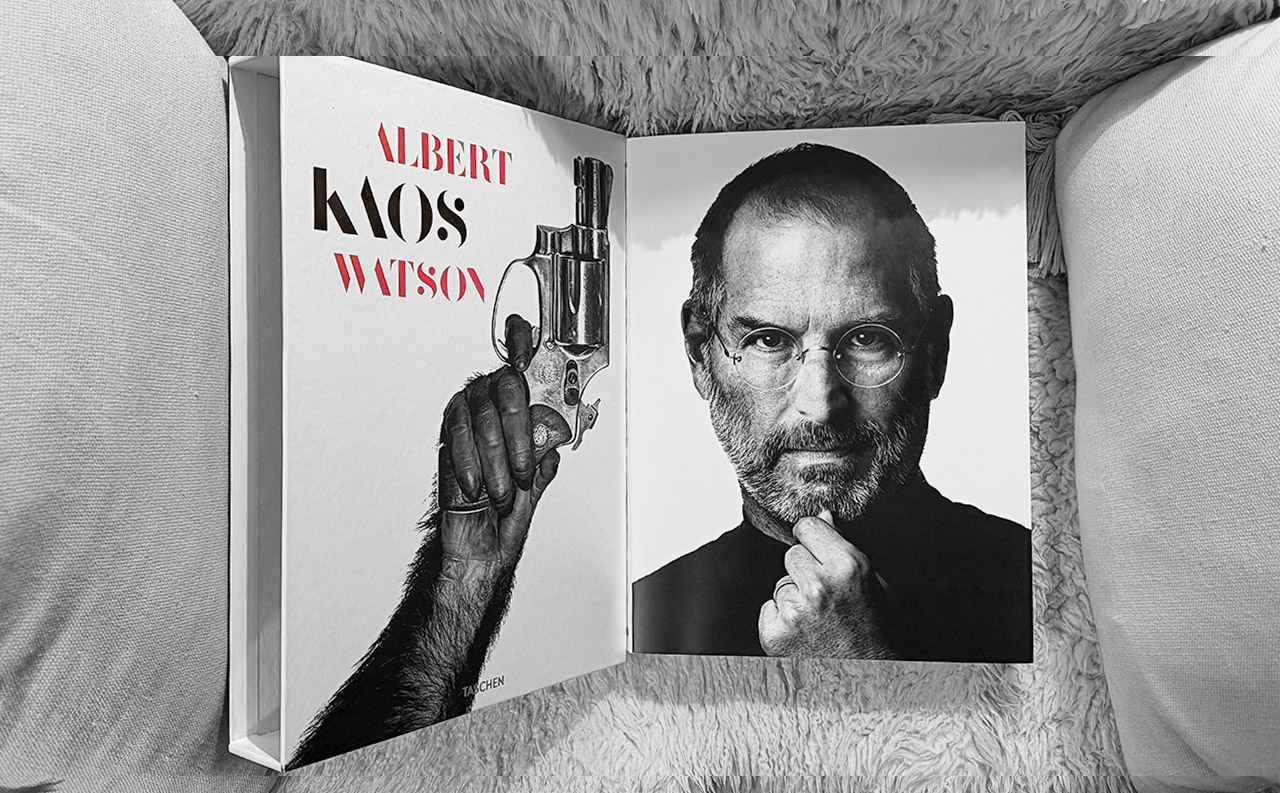KI-Prompt Inspiration: Retrofuturismus
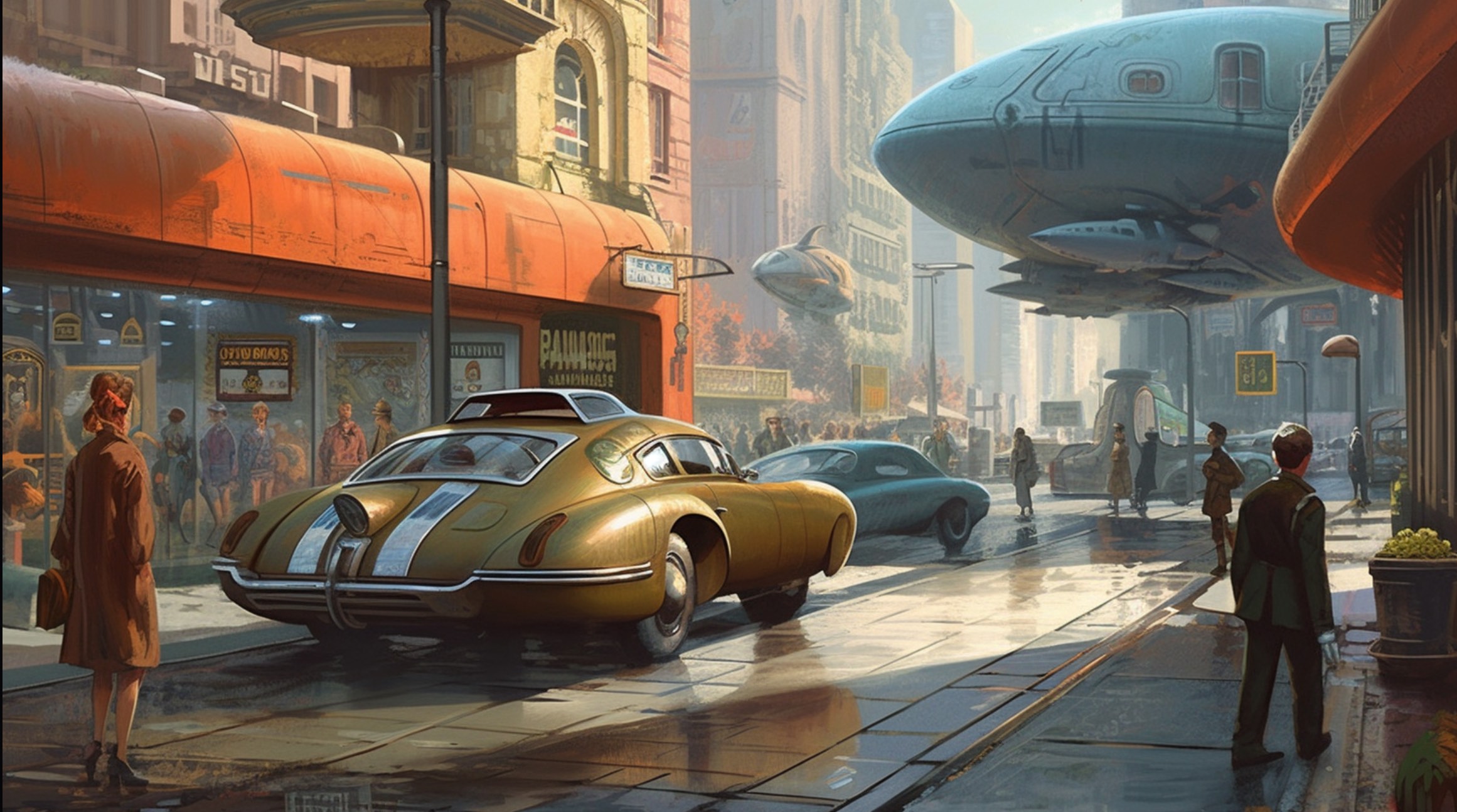
Der Begriff „Retrofuturismus“ beschreibt eine in den 50er und 60er Jahren des letzten Jahrhunderts äußerst populäre Illustrationsweise. Ihr Gegenstand war die Idee der Zukunft, wie sie vor rund einem halben Jahrhundert vorherrschte.
Meist ging es in den Bildern um Weltraumreisen, Architektur und Mobilität. Der Stil ist bestimmt von einer comicartigen Umsetzung mit viel Sonnenschein und blauem Himmel – charakteristisch für den ungetrübten Fortschrittsglauben der Nachkriegszeit.
Midjourney Recherche
Kann man bei Midjourney recherchieren? Ja, man kann. Es reicht einfach das jeweilige Thema in den „/Image“-Prompt einzugeben und sich die Ergebnisse mithilfe der Reroll-Schaltfläche in mehreren unterschiedlichen Berechnungen anzusehen.
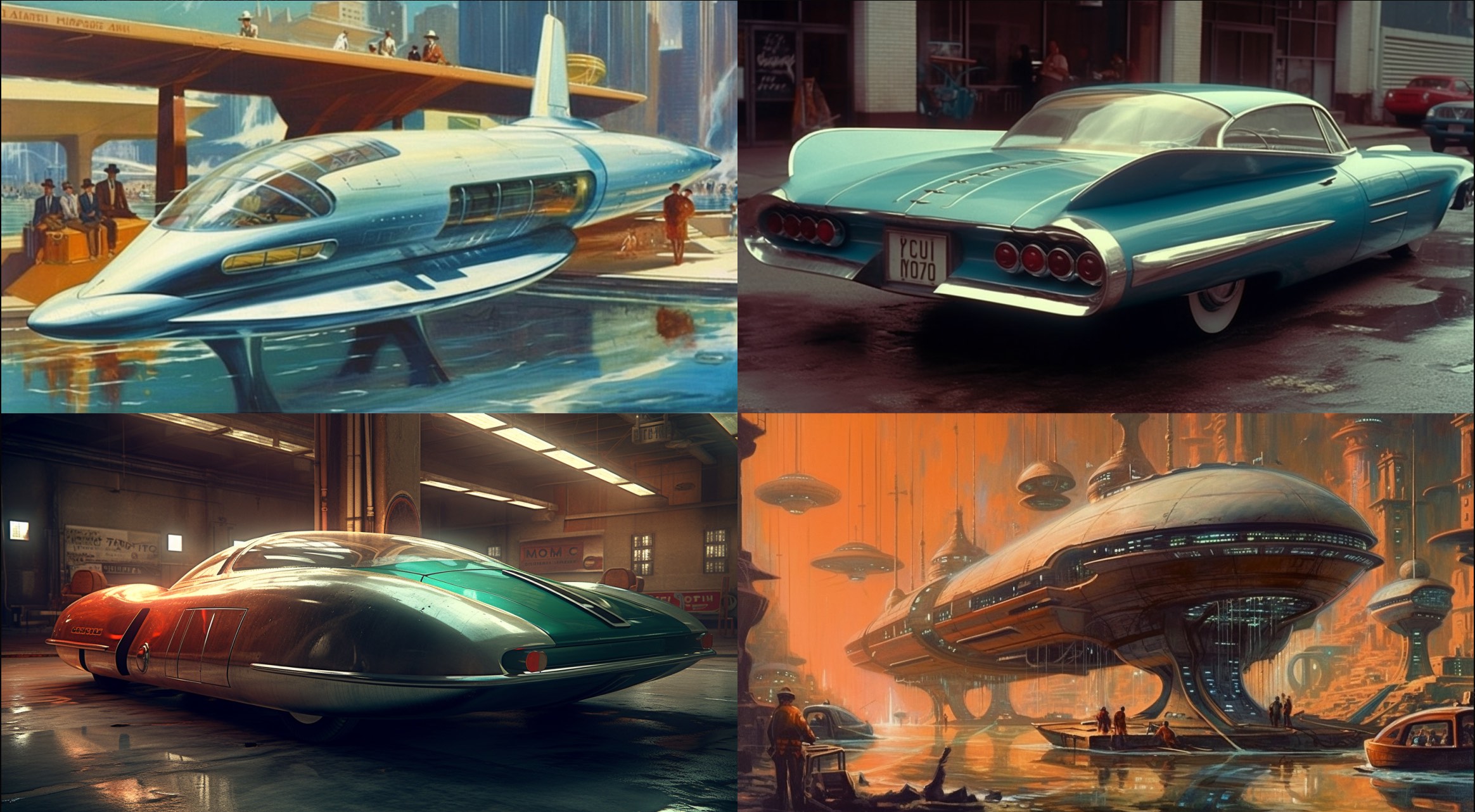
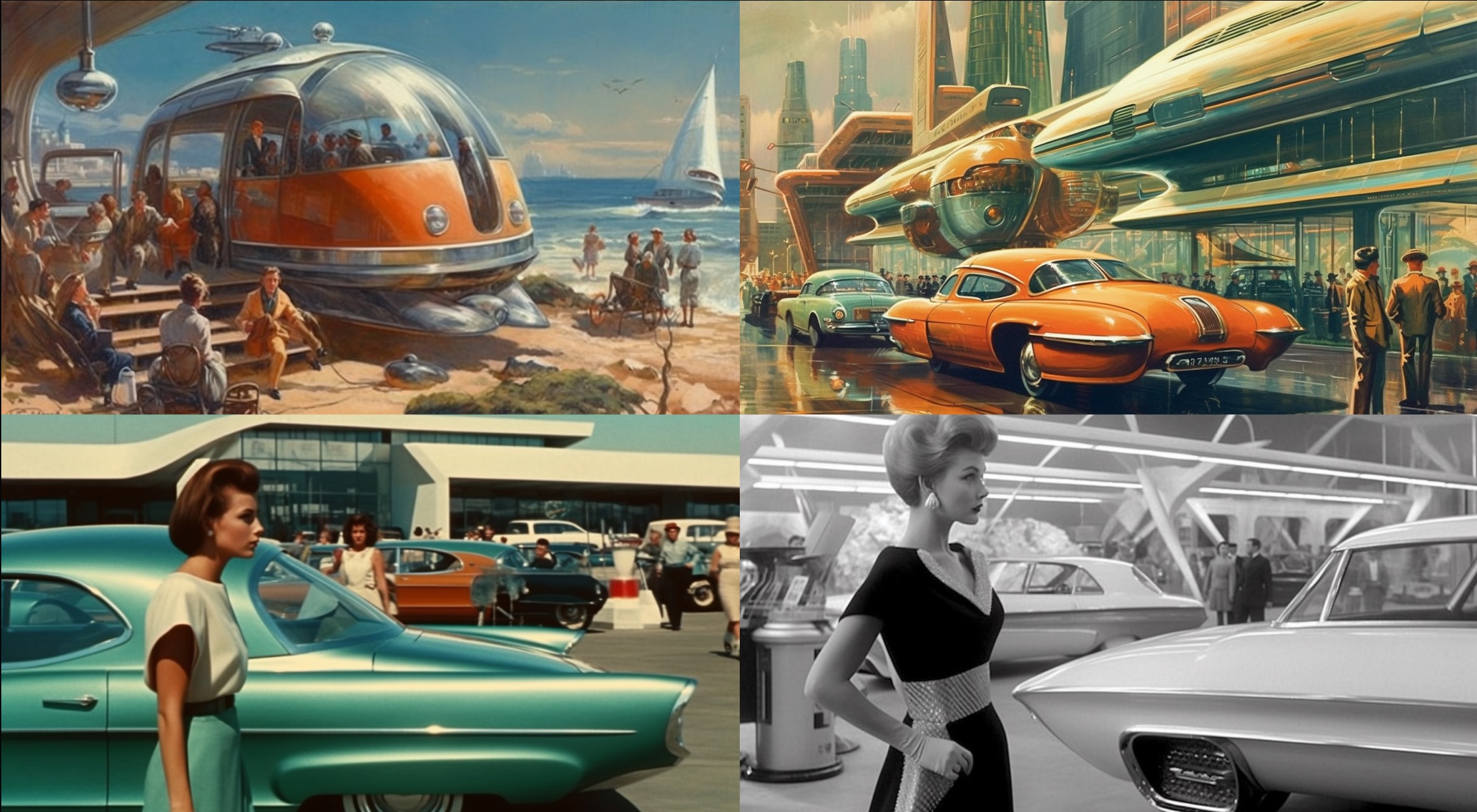
Ähneln sich die Ergebnisse zu sehr, hilft es den Parameter „Chaos“ zu bemühen und mit einem hohen Wert die Variationsbreite der Umsetzung zu verstärken:
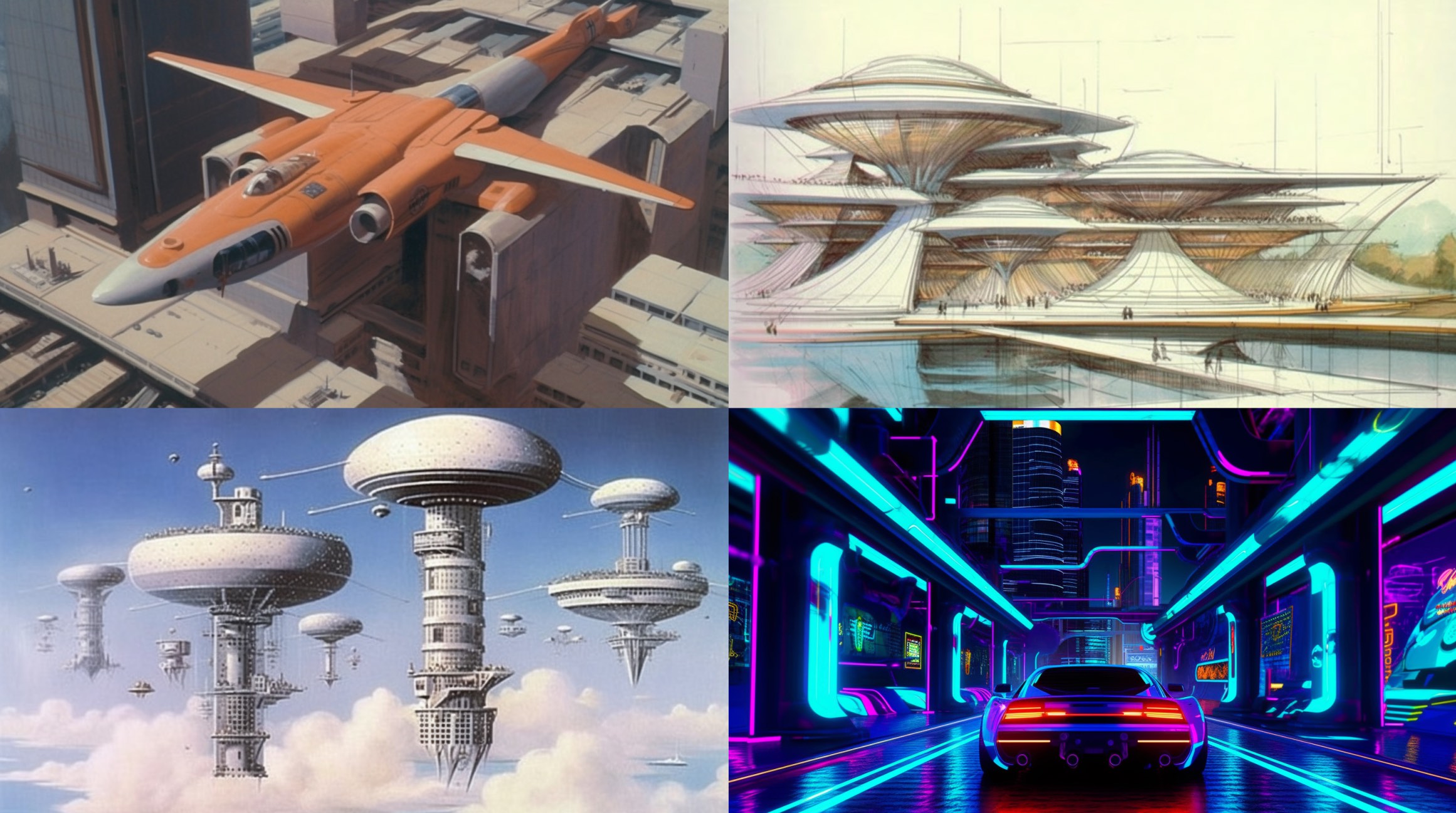
Hier sieht man schon deutlich, dass der ursprünglich süßliche 60er Jahre Stil erheblich technischer wird, um am Ende (rechts unten) fasst schon an eine moderne Form der Ästhetik des Tron-Films von 1982 zu erinnern.
Das Ergebnis dieser visuellen Recherche zeigt: Midjourney kann den Stil prinzipiell, verbindet ihn aber vor allem mit Autos, Luftfahrt und Architektur.
Retrofuturismus + Eigenes Thema
Ich erinnere eine ganz bestimmte derartige Illustration, die mein kindliches Gemüt beeindruckt hat. Zu sehen war eine Familie, die ein Gesellschaftsspiel spielend mit einem autonom fahrenden Auto auf Reisen war. Im Web fand ich das Bild trotz eingehender Recherchen nicht. So wollte ich ein ähnliches Motiv mithilfe der KI nachempfinden. Der erste Versuch:
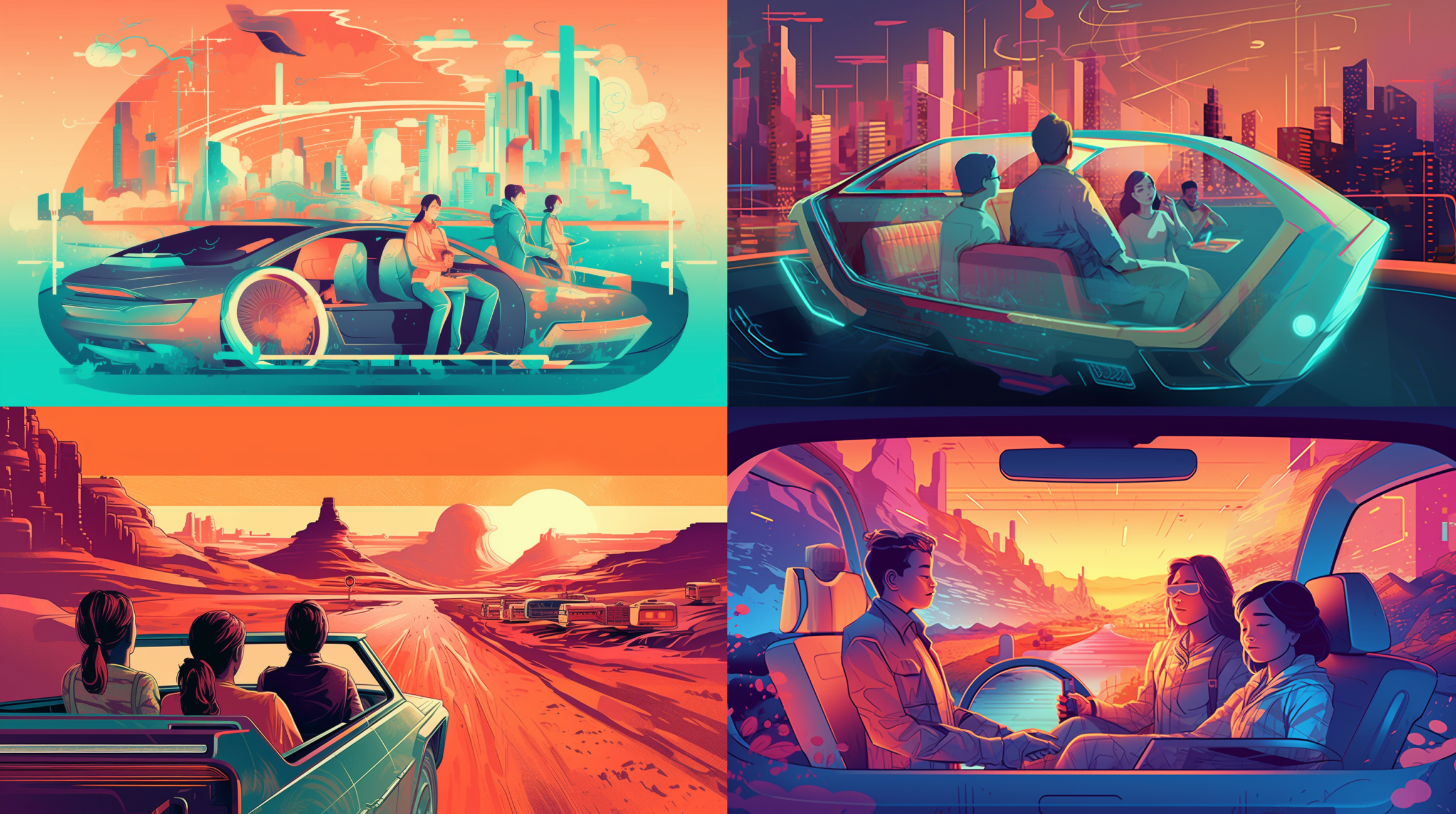
Ups, der ging daneben. Die ausführlichere Beschreibung „Professional retrofuturism Illustration“ war gut gemeint, aber augenscheinlich schlecht umgesetzt, denn die Ästhetik wirkt fast zeitgenössisch modern und verliert ihren altertümlichen Charme.
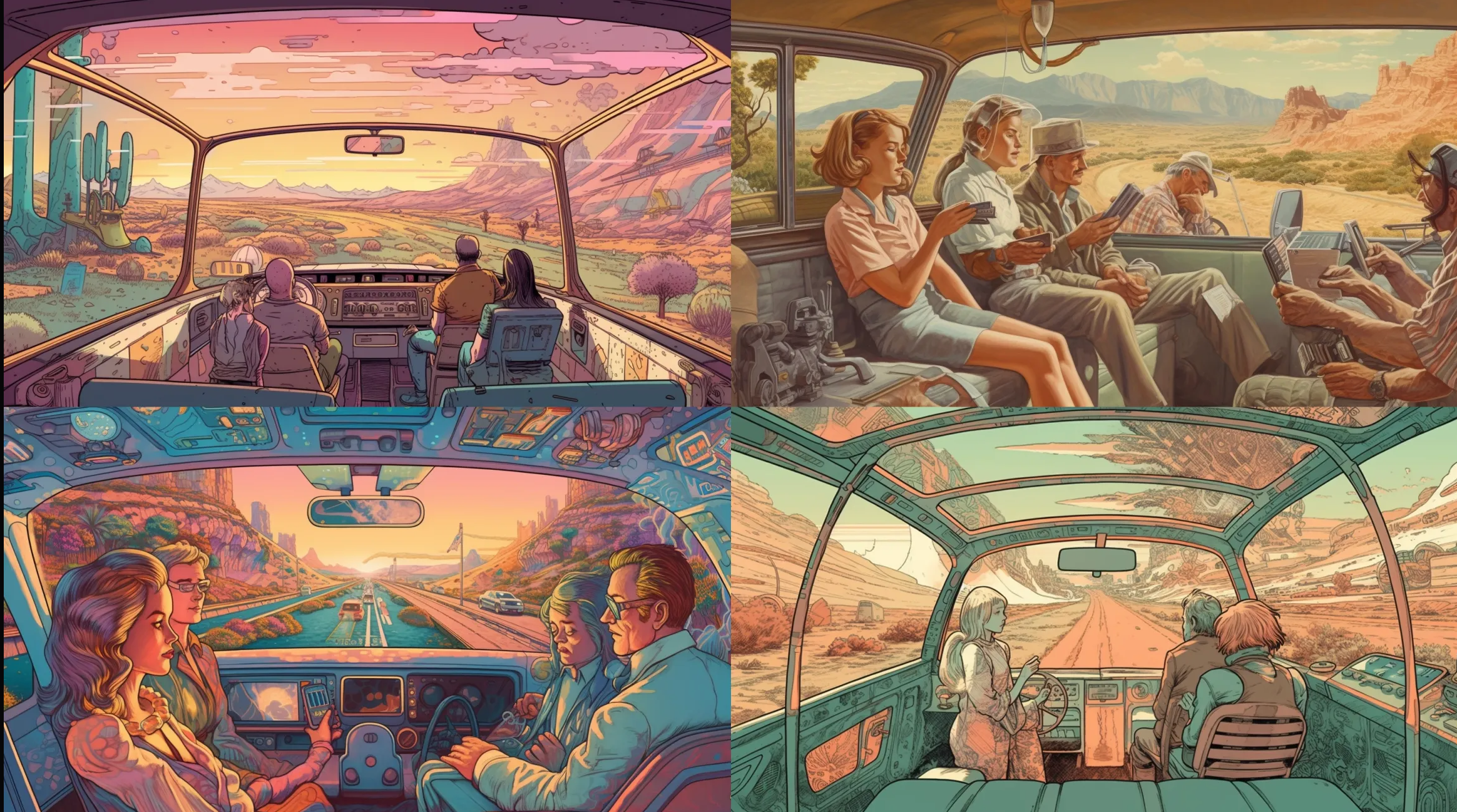
Schon besser, doch eher zu comichaft, und es fehlt immer noch der retrofuturistische Charme. Vielleicht reicht es ja einfach nicht aus, sich nur auf den Stil festzulegen. Möglicherweise hilft ein Verstärker, zum Beispiel der Name eines der Künstler, die für diesen Stil bekannt waren. Ich habe wieder (diesmal bei Google) recherchiert und bin auf einen Illustrator mit Namen „Arthur Radebaugh“ gestoßen. Ein Test bei Midjourney ergab, dass auch das KI-System ihn kennt.

Der Versuch, den Stil mit meinem Thema zu kombinieren gestaltet sich eher zäh. Midjourney muss jetzt mehrere Bildkonzepte zusammenbringen: autonomes Autofahren, Familie, Spiele spielen, die Zukunft und eine bestimmt Form der Illustration. Daran scheitert es, wie man sehen kann. Vielleicht liegt es an der Eingabe der Informationen auf konventionelle Weise, also durch einen Prompt, der kurz, knapp und deskriptiv angelegt ist.
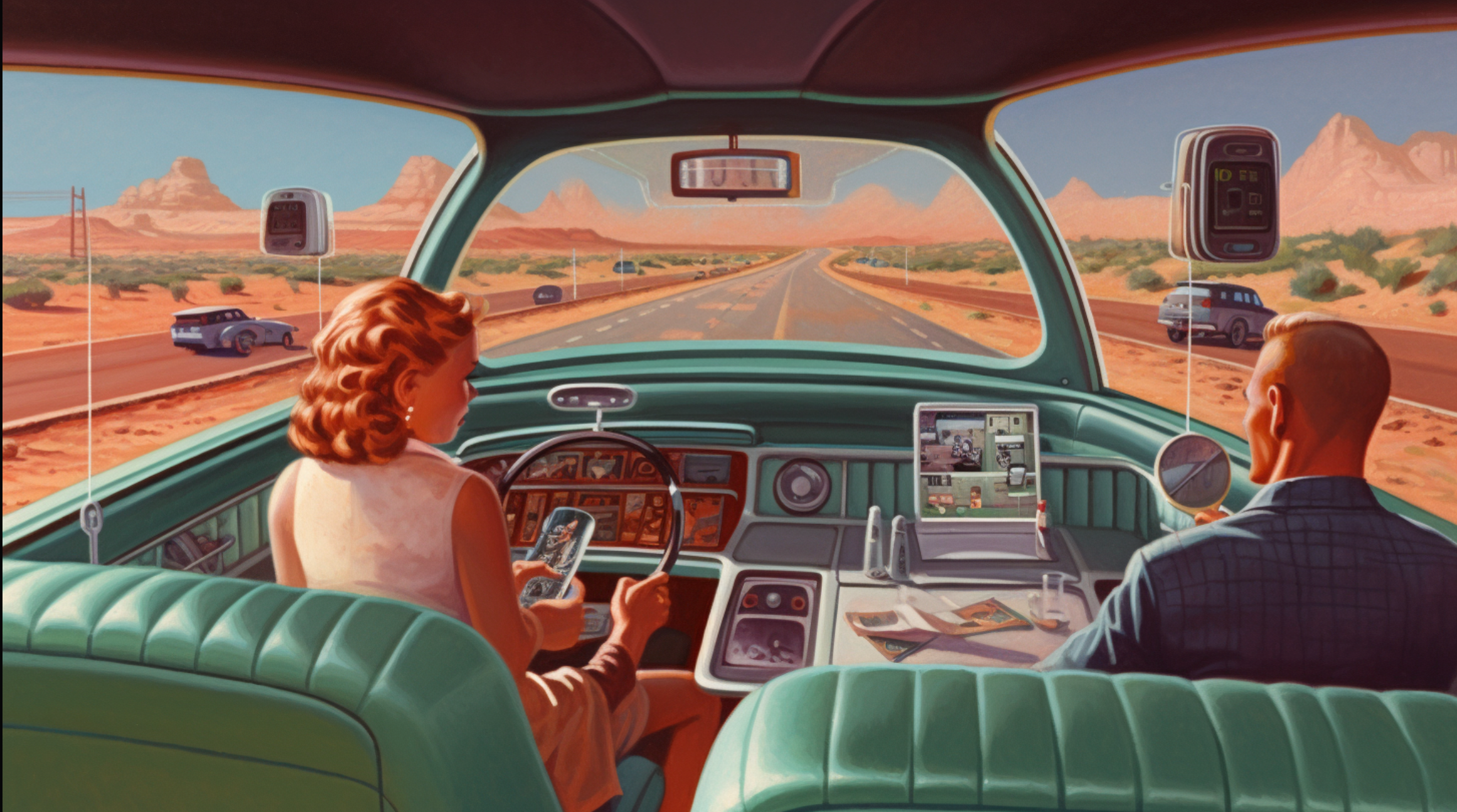
Alternative Multiprompts
Teile von Prompts kann man nach Wunsch gewichten, wenn man die Bildelemente nicht nur durch ein Komma, sondern durch doppelte Doppelpunkte (::) trennt und sie mit einer Gewichtungszahl versieht.

Aber auch das sieht nicht so aus wie ich es mir vorstelle. Es hilft möglicherweise ein neuer Versuch mit einem veränderten Prompt-Konzept, das die spielende Familie in den Vordergrund stellt.
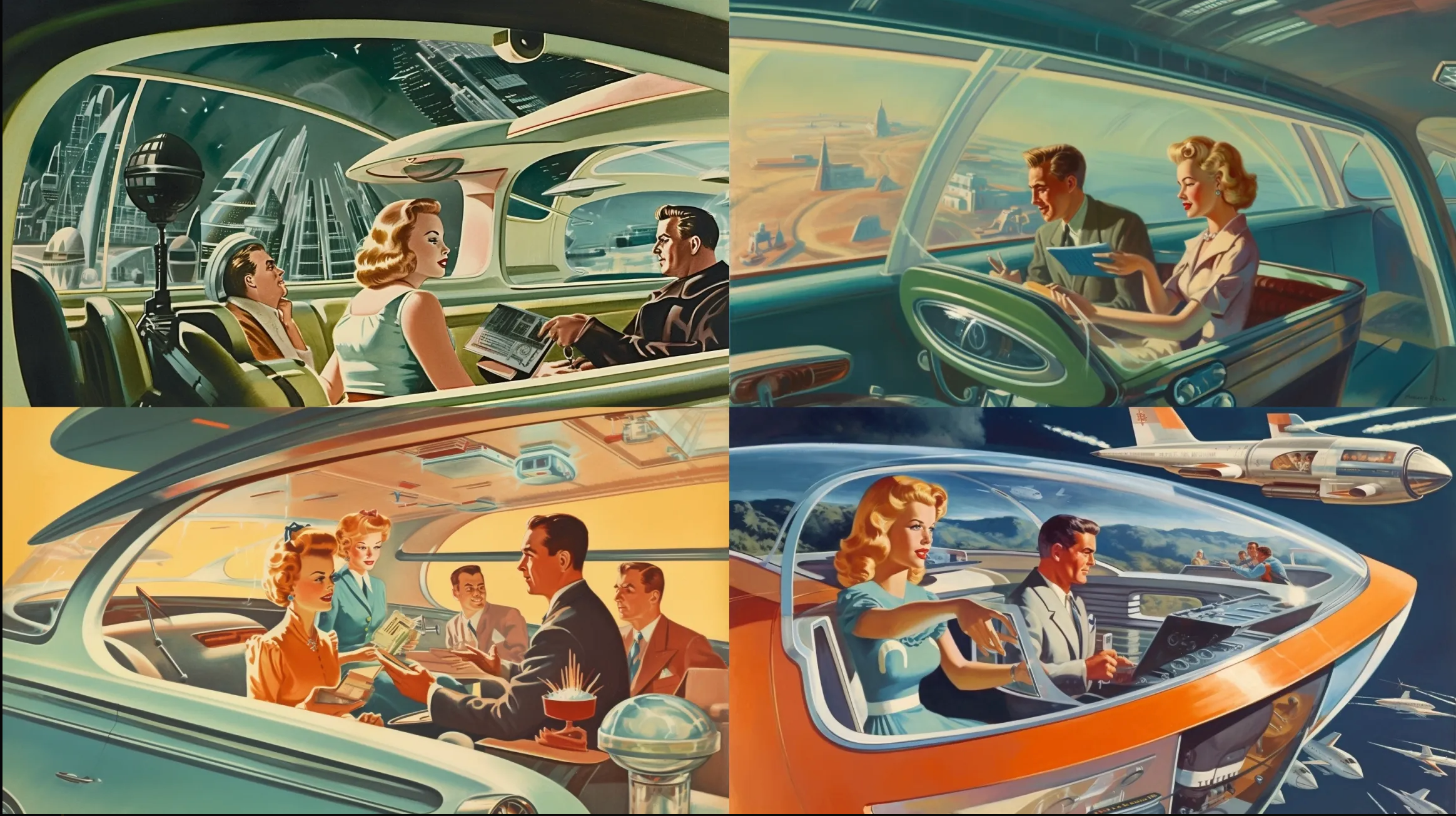
ChatGPT: Hilfe einer andern KI
Es wird etwas besser, aber so richtig will das Ergebnis mit meinen Vorstellungen nicht harmonieren. Auch etliche (hier nicht gezeigte) Varianten später kommt es dem Ziel immer noch nicht näher. Also ein anderer Versuch: Ich lasse mir den Retrofuturismus Midjourney Prompt teils von ChatGPT schreiben. Mein ChatGPT-Prompt dafür lautet:

Im ersten Schritt habe ich nur den ersten Absatz des ChatGPT-Ergebnisses als Prompt genutzt.
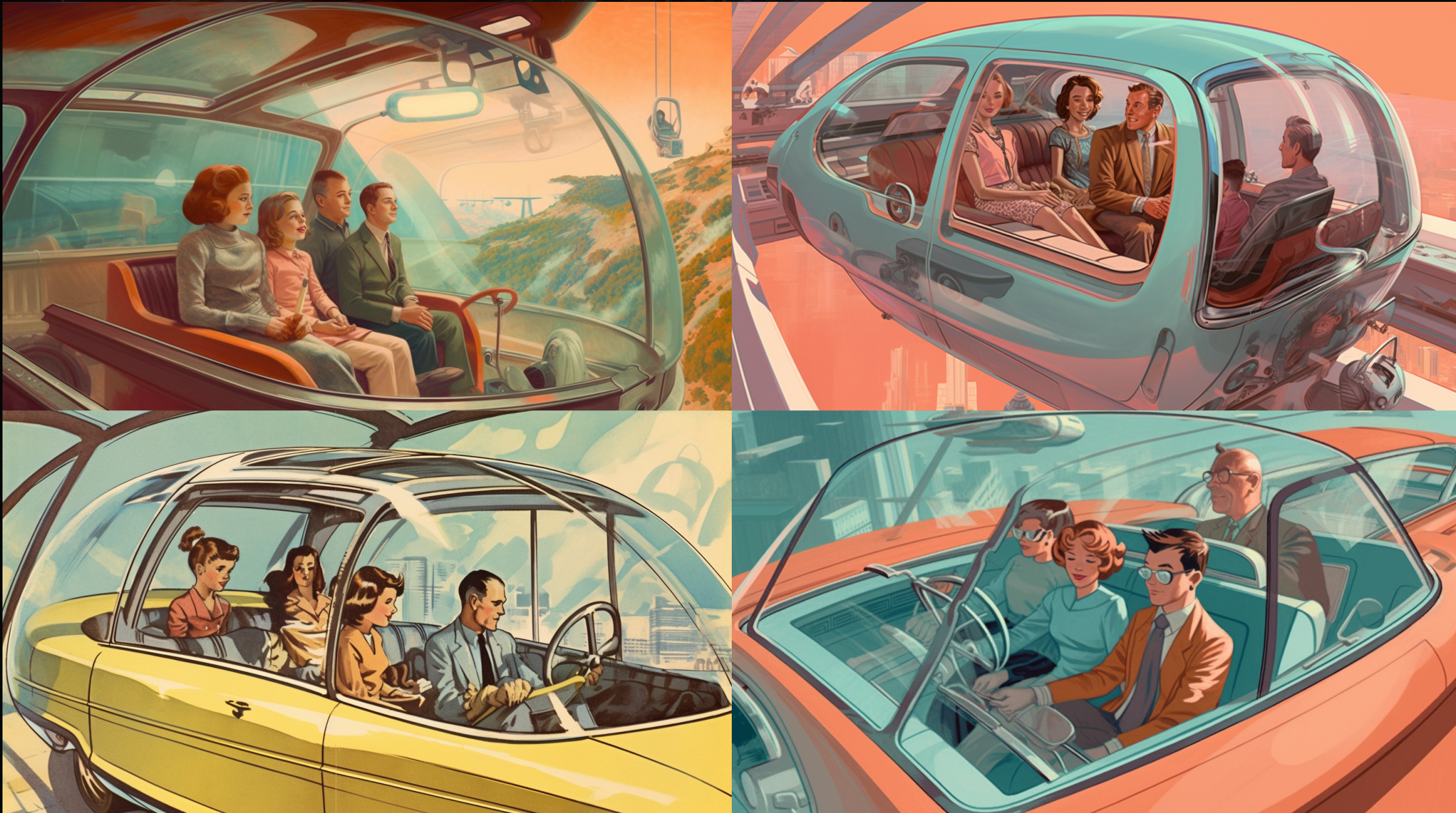
In zweiten Durchlauf das ganze Ergebnis mit der ChatGPT eigenen sprachlichen Redundanz, die ich im Englischen nur mit allergrößter Mühen und ganz bestimmt nicht so eloquent zustande bekäme.
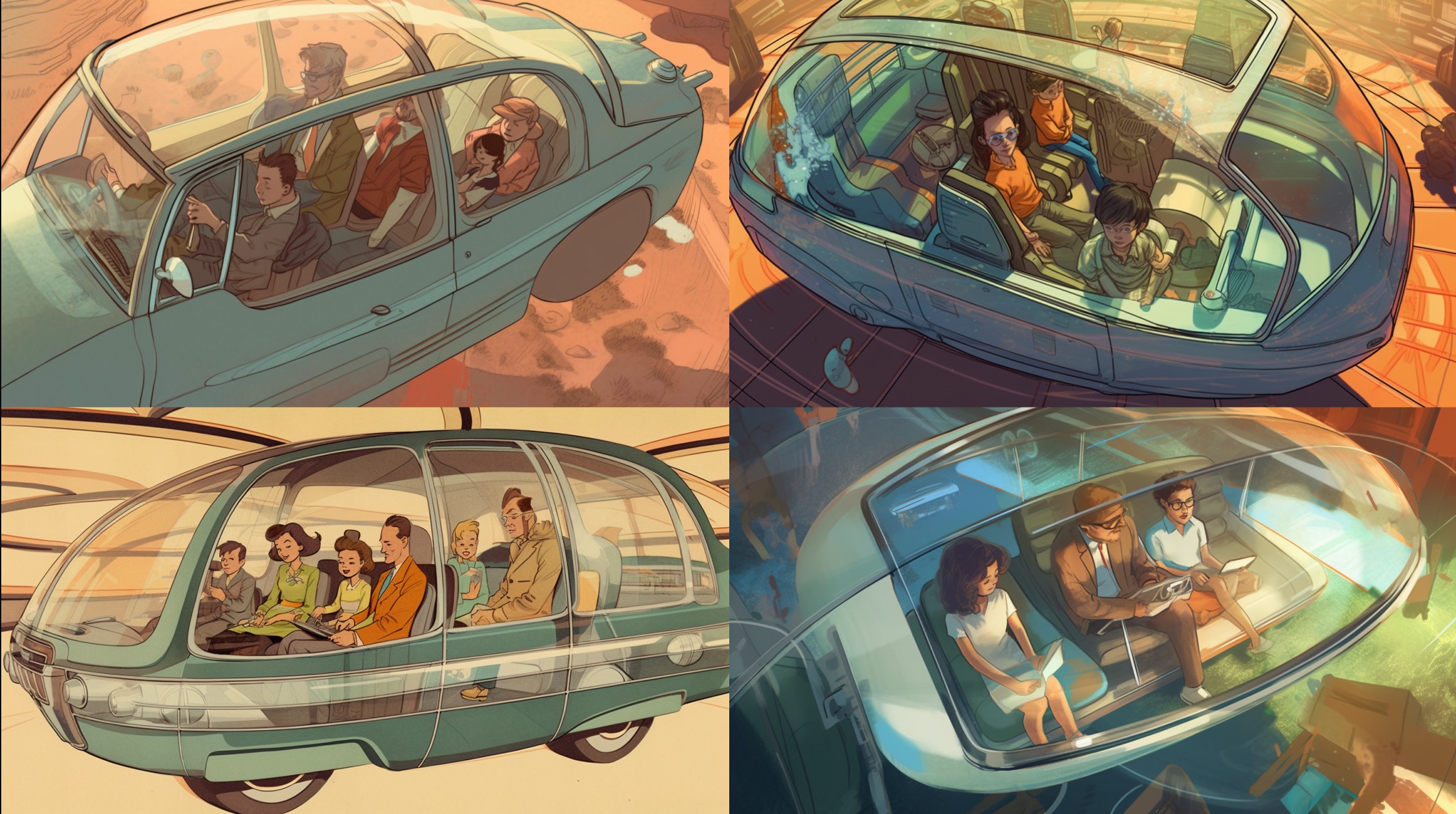
Inhaltlich ist das Ergebnis nun deutlich besser. Doch nicht optimal. Daher sollten ein paar Gewichtungen erfolgen und der Text lässt sich sicher auch etwas eingrenzen.
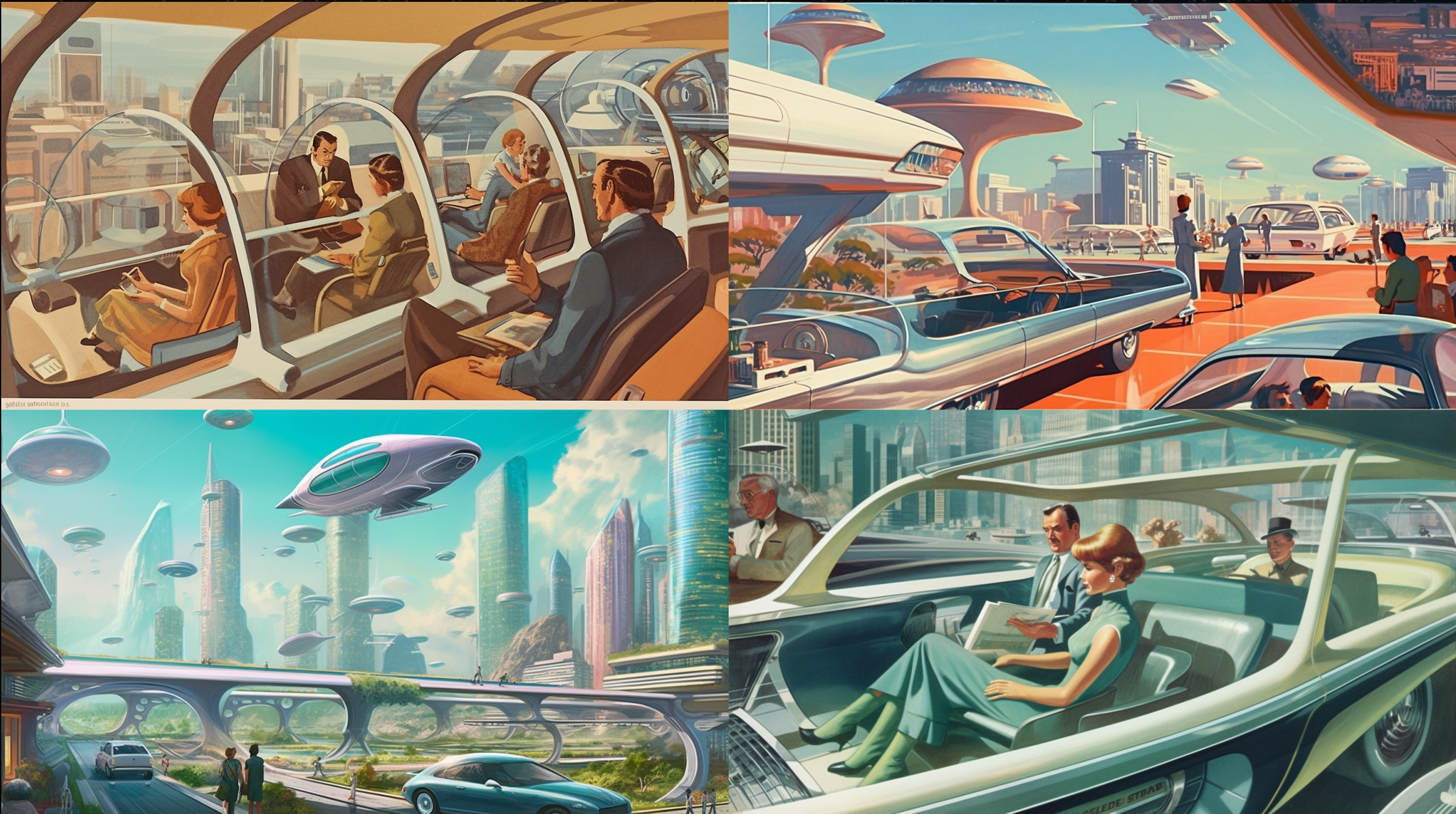
Wieder besser, aber immer noch nicht wirklich befriedigend.
Retrofuturismus: Fazit
Vermutlich sind relativ wenige Bilder in der Trainingsvorlage, wenn es um das Thema Retrofuturismus geht. Ich wurde mit den Ergebnissen trotz mehrerer Stunden des Experimentierens nicht sonderlich glücklich. Aber vielleicht war mein Bild, das ich in Erinnerung hatte, noch zu konkret für meine Ausdrucksmöglichkeiten. Oder für die Möglichkeiten von Midjourneys Version 5. Selbst die redundanten Prompt-Variantionen von ChatGPT waren in diesem Fall keine Hilfe. Da freut es umso mehr, dass Version 6 von Midjourney bereits im Anmarsch sein soll.








